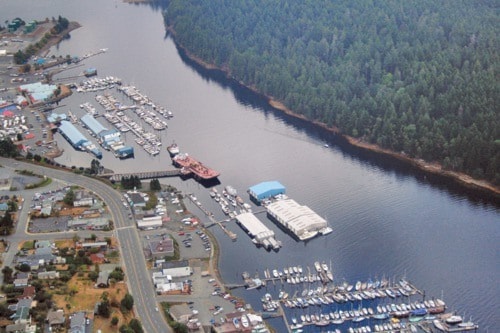Rick Henry scans the sky, a foggy grey mess of cloud and dappled sun, as he awaits news about a flight window to search for a fictitious missing plane.
He knows members of the Civil Air Search and Rescue Association won’t find an actual plane, but approaches the matter seriously.
The missing plane, a blue and white Piper 160 aircraft, left Duncan Sept. 16 and was heading to Campbell River but it never arrived at its destination. Contact was lost with the flight near Crofton. The 38-year-old male pilot had eight years of flying experience. Nothing was known about his passenger.
Civil Air Search and Rescue Association members, a nationwide volunteer group, only had a narrow window of good weather to take to the skies and search for any indication of the craft.
The details of the flight weren’t real – all part of the CASARA Island training exercise held at the Nanaimo Airport Saturday. However, members treated the situation seriously because they knew at any moment they could be called to a real rescue and the skills they learned could help save a person’s life.
“We’re trying to help find people and save lives and that is a good feeling,” said Henry, Nanaimo area deputy and search coordinator for the central Island.
Henry said members joined because they are dedicated to making a difference in people’s lives.
Robert Northcott, an eight-year veteran and member of the Victoria chapter, said one of the most challenging things is staying focused on the serious nature of the situation while training because people’s lives depend on it. It’s easy to crack a few jokes but every volunteer knows the skills are important to develop.
“Ultimately someone is going to live or die on how well we do training,” said Northcott. “It’s a good group. We are adding value to society.”
The search is carried out along the plane’s potential route based off its last known position. Searchers create a 16-kilometre grid on each side of the route.
Since the training exercise scheduled in the air is delayed, members practise their skills in a mock plane. Four folding chairs are set up on a patch of grass outside the association’s newly renovated Nanaimo Provincial Emergency Program facility, a dedicated room constructed out of a portion of a Nanaimo Flying Club hangar.
Spotter trainer John Willson instructs members on the importance of four components when giving information to the pilot to find the object: what direction to turn, the angle of the object, the distance and a description of the object.
Spotters are the eyes of the search. They scan the ground for any indication of a person, vehicle or plane. Island CASARA members are called to help in cases of lost hikers, planes and vehicles.
One of the major obstacles on the Island is the thick canopy of trees.
“The canopy of trees is almost impenetrable,” said member Gregory Law.
He said spotters have to ensure they conduct searches in a methodical way and pay close attention to reflections or a little spot of colour. Other indicators are carrion birds, broken trees and disturbances in the ground. During the exercise they call out items on the ground to hone their skills, such as a brightly coloured kayak slightly hidden on a beach under some trees.
Rick Weatherhead said spotters have to search in a particular pattern and fight against a person’s natural tendency to just look around. Spotters scan either inward or outward from the plane, depending on what side they sit on, in a grid-like pattern.
The pilot relies on the keen eyes of the spotter.
“You only have seconds to spot something,” said Bill Velie, zone commander for Vancouver Island. “And for the pilot the minute the spotter spots something we need to orient ourselves to come back to that.”
The rescuers can also search for the plane’s Emergency Locator Transmitter, a transponder device that emits an electronic signal. However, the transponder could be damaged in a crash and might not emit a signal. During the exercise transponders were placed in the search area for members to find.
Time is of the essence during a search but ensuring safety is a priority.
“It is demanding flying and of course safety is always paramount for everything we do so we double-check everything,” said Velie.
Velie said the association is always seeking volunteers. For more information on CASARA please go to www.casara.ca.
Sider:
Members of the Nanaimo Civil Air Search and Rescue Association celebrated the completion of their newly renovated search headquarters on Saturday.
Rick Henry, Nanaimo area deputy and search coordinator for the central Island area, said the new building will help immensely during rescue searches that span several days because there is space for searchers to leave their equipment set up. The space was created out of a portion of a Nanaimo Flying Club hangar.
Members of the volunteer association, the Nanaimo Airport, Nanaimo Flying Club and provincial CASARA representatives were in attendance.
Civil Air Search and Rescue Association members were also involved in the search to find pilot Rod Phillipson who was found dead Tuesday afternoon near Coquihalla Mountain.
None of the members were from Vancouver Island, but local volunteers were alerted that they may be called to assist in the operation.
